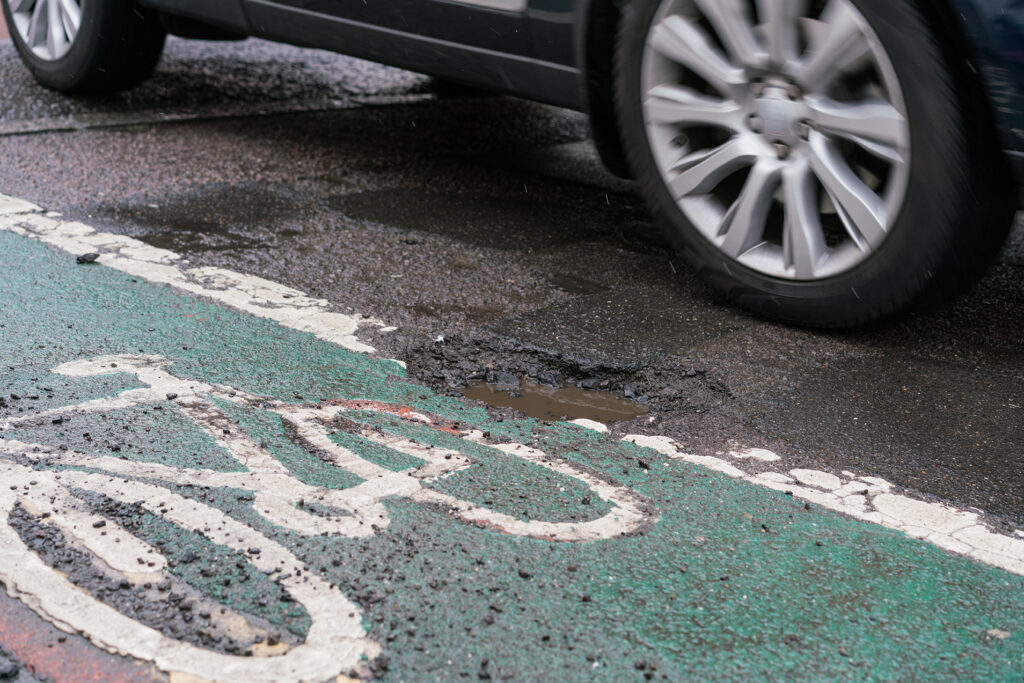£14 Billion Road Repair Bill: Navigating the Bumps in Britain’s Infrastructure

As we navigate the roads of the United Kingdom, it’s hard to ignore the potholes and uneven surfaces that have become a common sight. The state of the nation’s roads has raised concerns, and a recent report sheds light on the financial toll of repairing this crucial infrastructure.
With a staggering £14 billion road repair bill looming on the horizon, it’s time to delve into the reasons behind this hefty cost and explore potential solutions to smoothen the journey ahead.
Plan Insurance can provide bespoke taxi insurance quotes for all UK drivers. Just fill in our short online questionnaire, and our professional brokers will be in contact to arrange your insurance.
Britain’s Road Repair Stats
According to a survey by the Asphalt Industry Alliance, it would take 11 years for local authorities to fix every crumbling road in England and Wales, up from nine years in 2022.
Overall, the AIA found that there were 8,000 fewer miles of road classified as ‘good’ compared with the previous year, a fall of 4%.
Despite the deteriorating state of the nation’s roads, only 1.4 million potholes were filled in 2022/3, down from 1.7 million in the previous year.
Despite the number of submitted claims falling compensation paid out for accidents and damage caused by poorly maintained roads has risen by 30%
The total amount paid in claims has risen from £8.9 million to £11.6 million
Last year, the potential cost for councils to fill in all potholes stood at £12.64 billion . However, since then, it has risen by 11% to £14.02 billion.
Potholes Proliferate: The Culprits Behind the Craters
Potholes are the most significant contributor to the astronomical repair bill. These seemingly small craters on the road surface can cause substantial damage to vehicles and pose safety hazards for drivers and pedestrians alike. The harsh British weather, with its combination of rain, frost, and fluctuating temperatures, takes a toll on the asphalt, leading to the formation of these road craters. Additionally, the increased traffic load, especially from heavy goods vehicles, accelerates wear and tear.
While potholes are a natural outcome of aging infrastructure and adverse weather conditions, the lack of timely maintenance exacerbates the problem. Neglected road surfaces are more prone to developing these hazards, contributing to the soaring repair costs.
Funding Potholes: The Financial Challenges of Road Maintenance
Addressing the £14 billion road repair bill requires a closer look at the financial challenges faced by authorities responsible for maintaining the nation’s roads. The traditional model of relying solely on government funding has proven insufficient, leading to delays in essential maintenance work. The need for cost-effective and sustainable solutions has never been more apparent.
Local councils, burdened by budget constraints, find it challenging to allocate adequate funds for road repairs. The £14 billion figure underscores the magnitude of the problem. Innovative thinking and new funding is needed to ensure the longevity of our road infrastructure.
Future-Proofing Roads: A Sustainable Approach to Maintenance
While addressing the current repair bill is crucial, it is equally important to adopt a forward-thinking approach to road maintenance. Future-proofing our roads involves implementing sustainable practices that minimize the need for frequent repairs and reduce the overall financial burden. Investing in high-quality materials and construction techniques can extend the lifespan of road surfaces, ultimately saving costs in the long run.
Moreover, incorporating technology into road maintenance can streamline processes and enhance efficiency. Advanced monitoring systems can detect early signs of wear and tear, allowing authorities to intervene before minor issues escalate into major repair projects. Embracing innovation in road construction and maintenance is not only a cost-effective strategy but also a proactive measure to ensure the resilience of our infrastructure.
Community Engagement: A Road to Success
Engaging local communities in the maintenance of their roads is a crucial aspect of finding lasting solutions. Community involvement fosters a sense of ownership and responsibility, leading to more vigilant reporting of road defects and quicker response times from authorities. Establishing partnerships between local residents, businesses, and government agencies can create a collaborative approach to road maintenance, easing the burden on public finances.
The £14 billion road repair bill is a stark reminder of the challenges faced by the UK in maintaining its critical infrastructure. Potholes, financial constraints, and the need for sustainable practices all contribute to the uphill journey of ensuring smooth and safe roads. As we navigate through these challenges, a combination of innovative funding models, future-proofing strategies, and community engagement can pave the way for a more resilient and cost-effective approach to road maintenance. It’s time to address the bumps in our infrastructure and create a smoother ride for all road users.







